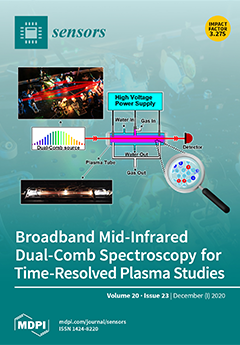Quality checks, assessments, and the assurance of food products, raw materials, and food ingredients is critically important to ensure the safeguard of foods of high quality for safety and public health. Nevertheless, quality checks, assessments, and the assurance of food products along distribution
[...] Read more.
Quality checks, assessments, and the assurance of food products, raw materials, and food ingredients is critically important to ensure the safeguard of foods of high quality for safety and public health. Nevertheless, quality checks, assessments, and the assurance of food products along distribution and supply chains is impacted by various challenges. For instance, the development of portable, sensitive, low-cost, and robust instrumentation that is capable of real-time, accurate, and sensitive analysis, quality checks, assessments, and the assurance of food products in the field and/or in the production line in a food manufacturing industry is a major technological and analytical challenge. Other significant challenges include analytical method development, method validation strategies, and the non-availability of reference materials and/or standards for emerging food contaminants. The simplicity, portability, non-invasive, non-destructive properties, and low-cost of NIR spectrometers, make them appealing and desirable instruments of choice for rapid quality checks, assessments and assurances of food products, raw materials, and ingredients. This review article surveys literature and examines current challenges and breakthroughs in quality checks and the assessment of a variety of food products, raw materials, and ingredients. Specifically, recent technological innovations and notable advances in quartz crystal microbalances (QCM), electroanalytical techniques, and near infrared (NIR) spectroscopic instrument development in the quality assessment of selected food products, and the analysis of food raw materials and ingredients for foodborne pathogen detection between January 2019 and July 2020 are highlighted. In addition, chemometric approaches and multivariate analyses of spectral data for NIR instrumental calibration and sample analyses for quality assessments and assurances of selected food products and electrochemical methods for foodborne pathogen detection are discussed. Moreover, this review provides insight into the future trajectory of innovative technological developments in QCM, electroanalytical techniques, NIR spectroscopy, and multivariate analyses relating to general applications for the quality assessment of food products.
Full article






